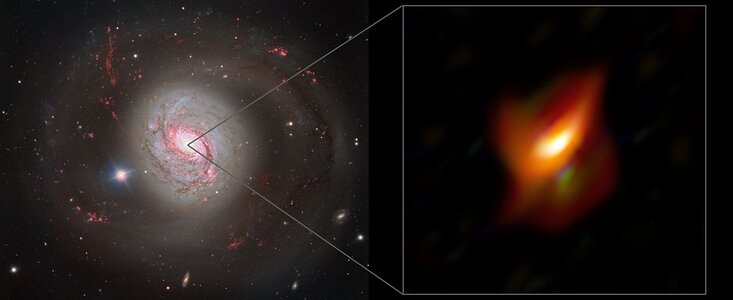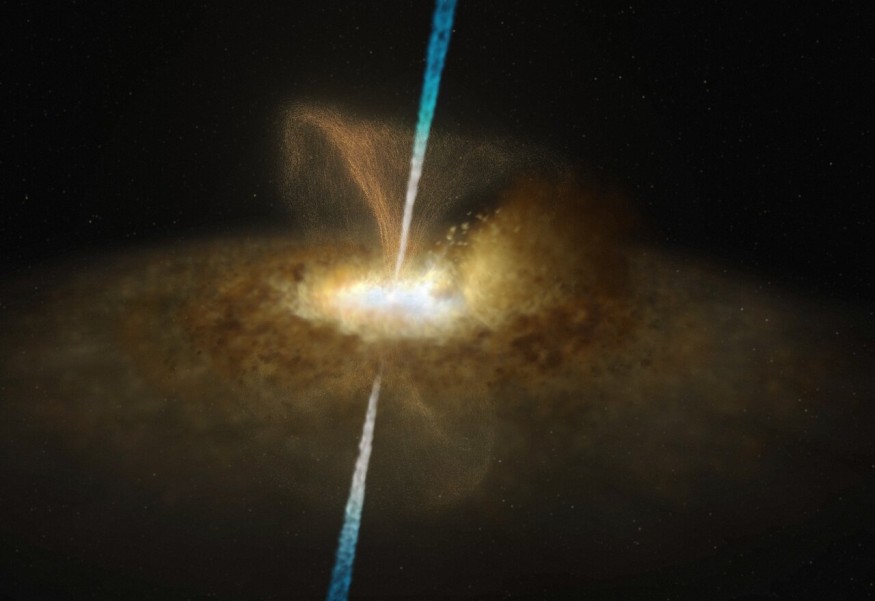
The Very Large Telescope Interferometer (VLTI) of the European Southern Observatory (ESO) has discovered a cloud of cosmic dust at the heart of Messier 77 that conceals a supermassive black hole.
The latest discovery backs up predictions made more than 30 years ago. The latest discovery provides scientists with new information on active galactic nuclei (AGN). These are some of the brightest and most intriguing objects in the cosmos.
SciTechDaily said AGNs are very intense sources driven by supermassive black holes located at the center of certain galaxies. Large amounts of cosmic dust and gas are consumed by these black holes.
This material spirals towards the black hole before being swallowed up, releasing massive quantities of energy and often outshining all of the galaxy's stars in the process.

Supermassive Black Hole Thermal Image
Astronomers from the European Southern Observatory (ESO) shared photographs of this intriguing object. According to Space, they used their Very Large Telescope Interferometer (VLTI) to accurately study the space phenomenon.
Experts also revealed that they had to adapt their Multi Aperture Mid-Infrared Spectroscopic Experiment (MATISSE) to ESO. The MATISSE telescope, which can see through a wide variety of infrared wavelengths, assisted scientists in seeing through the dust clouds.
Over the black hole, photos revealed a dense ring of cosmic dust and gas. The Unified Model of AGN explains the entire concept. They said AGNs have the same structure but may appear differently depending on how they are seen from Earth.
ALSO READ : Largest Monster Radio Galaxy Found: Biggest Structure Of Galactic Origin 16.3 Million Light-Years Away
Supermassive Black Hole Found in Galaxy Messier 77
According to Newsweek, the supermassive black hole is found at the center of M77. In exchange for tremendous emissions, this black hole has been feeding off the mass of the galaxy.
It's worth noting that these emissions emit more energy than the stars in M77. Scientists classified this as an AGN.
According to Bruno Lopez, a study co-author outlining this finding, AGNs are powerful things. They are, in fact, the brightest light sources that specialists are aware of.
He compared the newly discovered black hole to a billion times the mass of our sun, continually tearing down matter in an overheated accretion disk, causing jets, winds, and dust sublimation.

Biggest Black Hole Discovered Yet
Researchers expect knowing more about AGNs and galaxies will be aided by this newly found supermassive black hole. They pointed out that the Earth's solar system, which is located within the Milky Way, follows the same logic.
Violeta Gámez Rosas, the study lead author, said in a statement that the discovery might also help experts better comprehend the history of the Milky Way.
The said universe has a supermassive black hole at its heart that may have been active in the past.
RELATED ARTICLE : NASA Latest X-ray Polarimetry Explorer Space Telescope Shares First Ever Stunning Photo [LOOK]
Check out more news and information on Space in Science Times.
© 2025 ScienceTimes.com All rights reserved. Do not reproduce without permission. The window to the world of Science Times.












